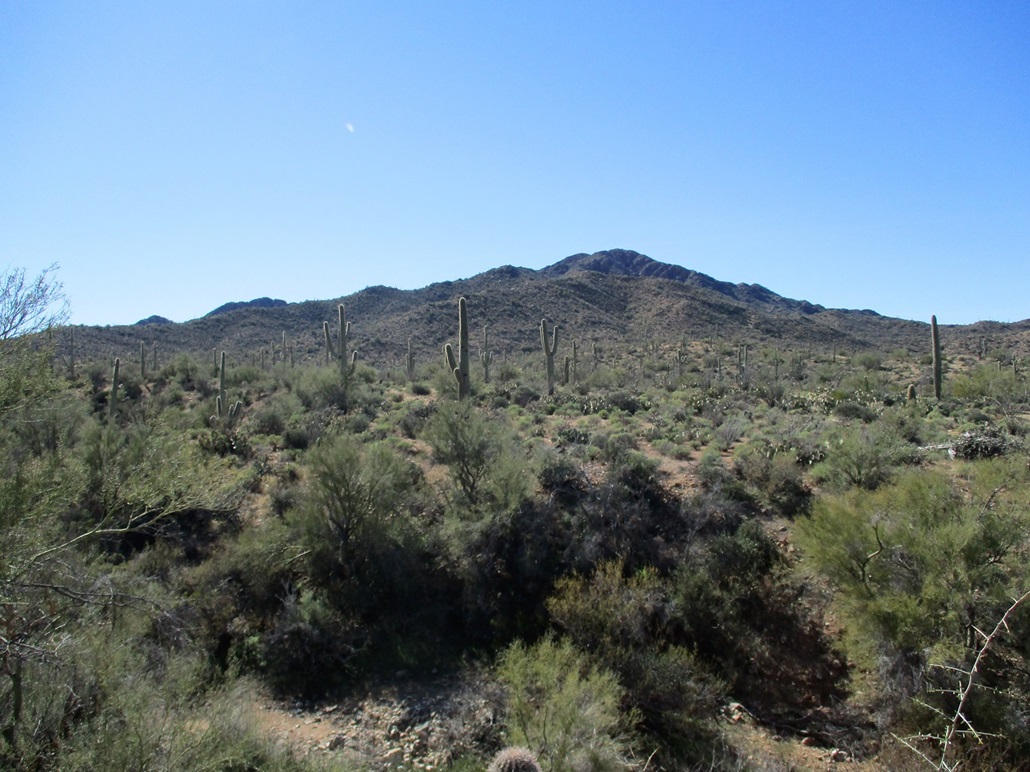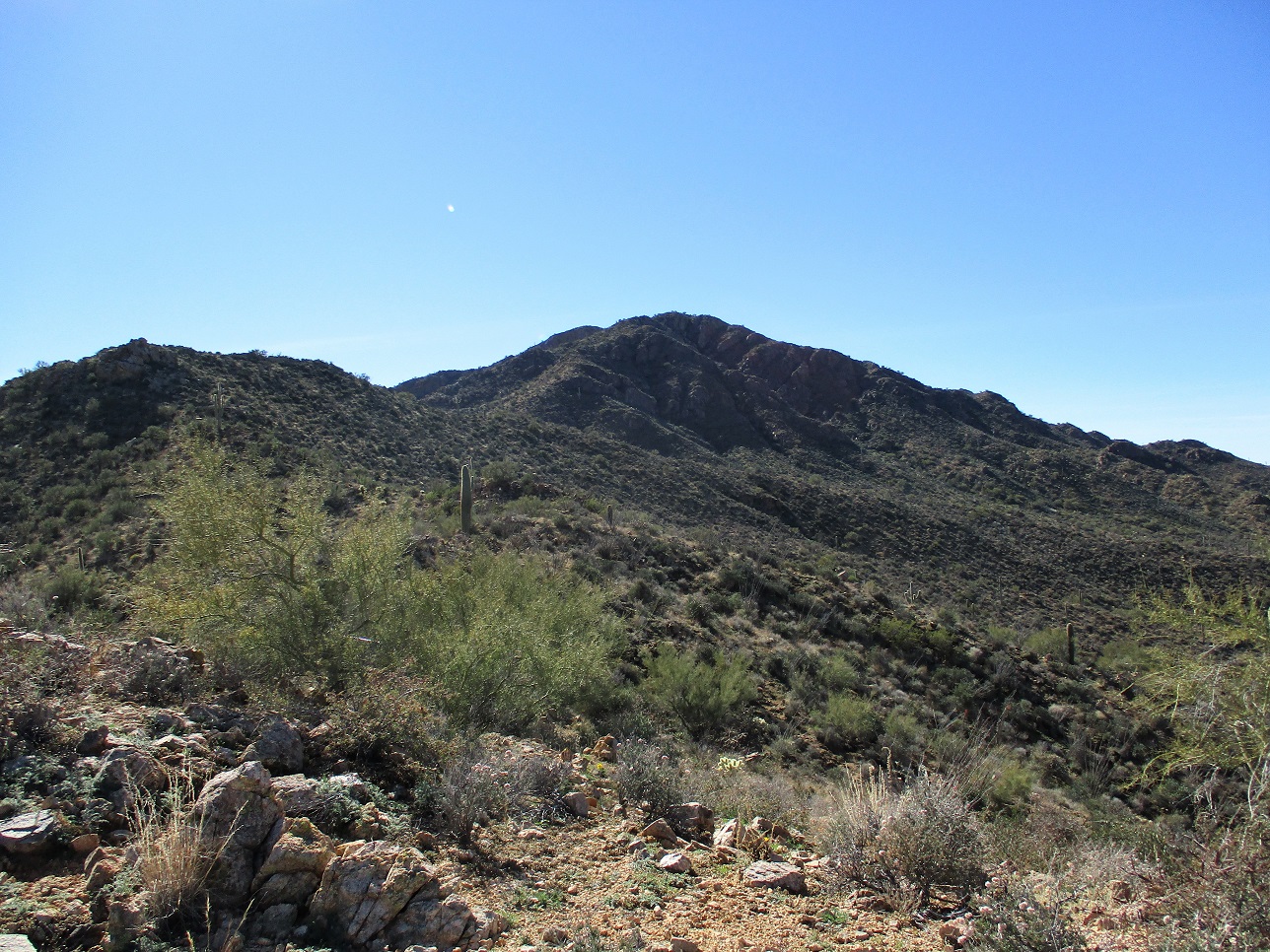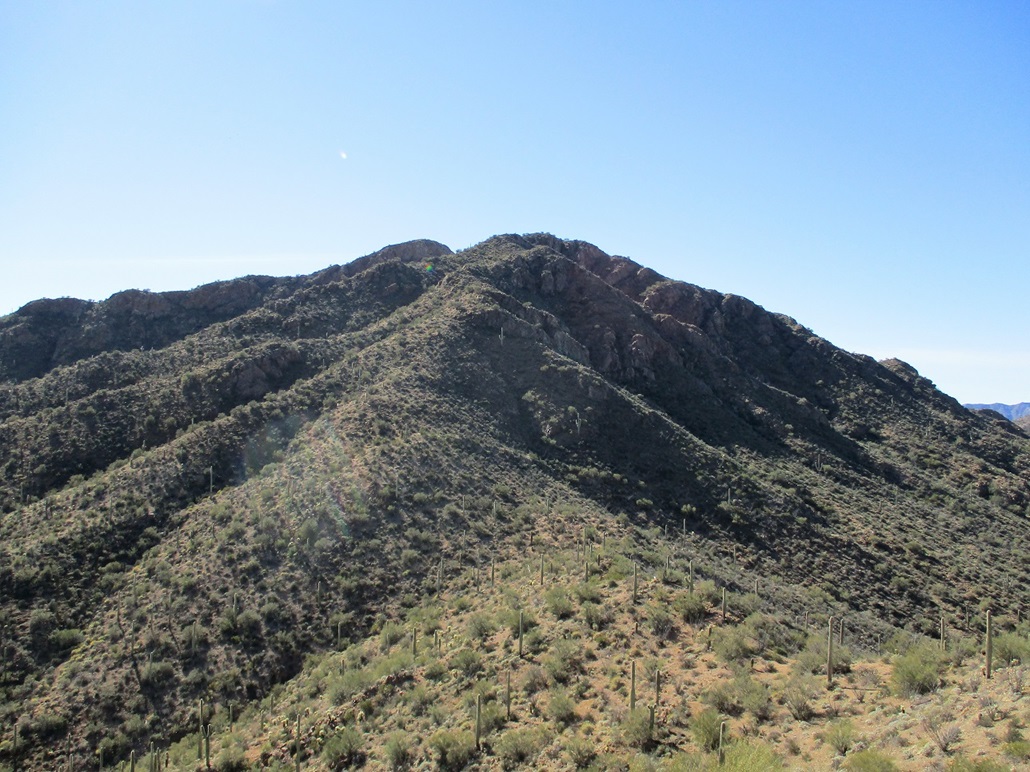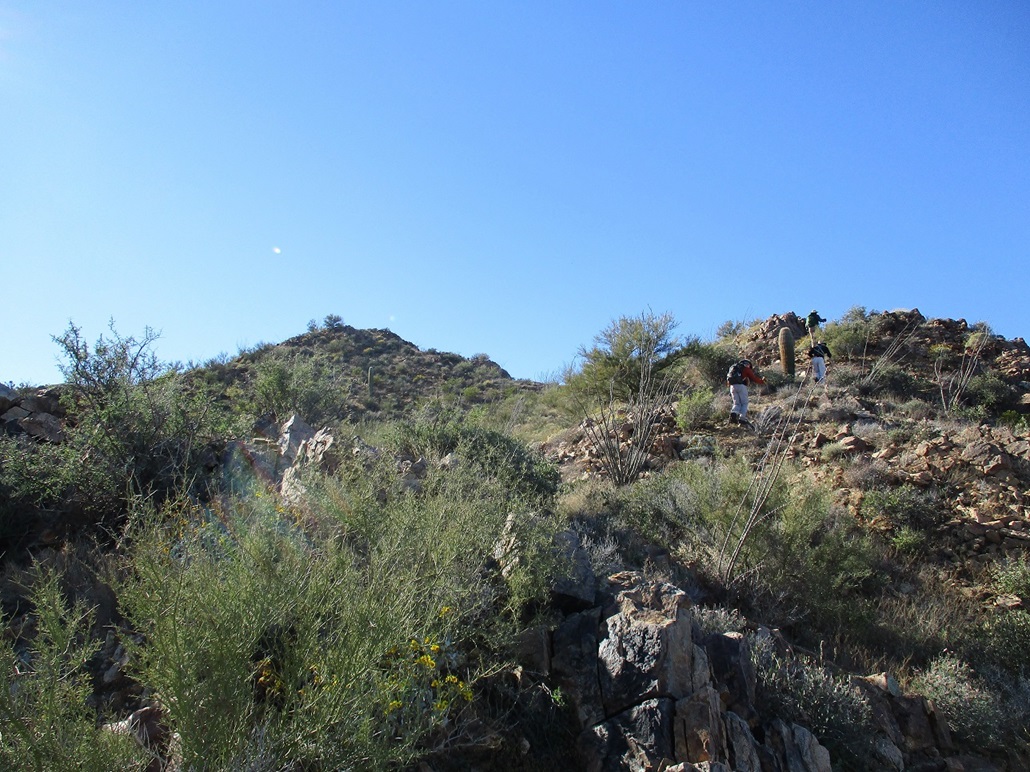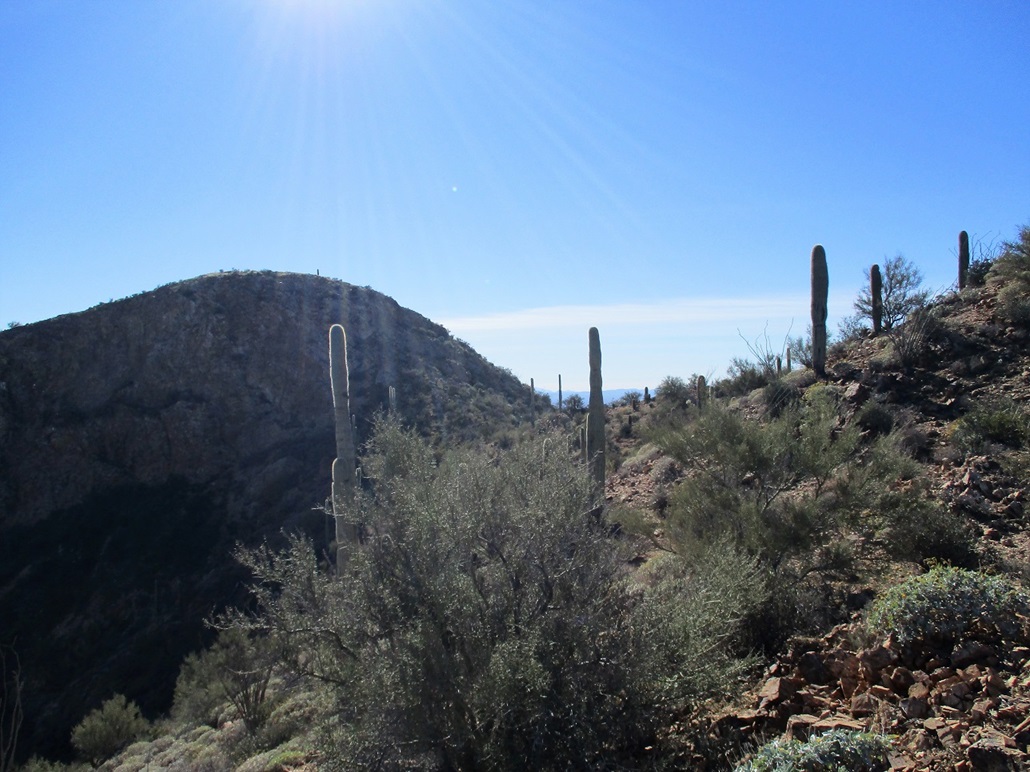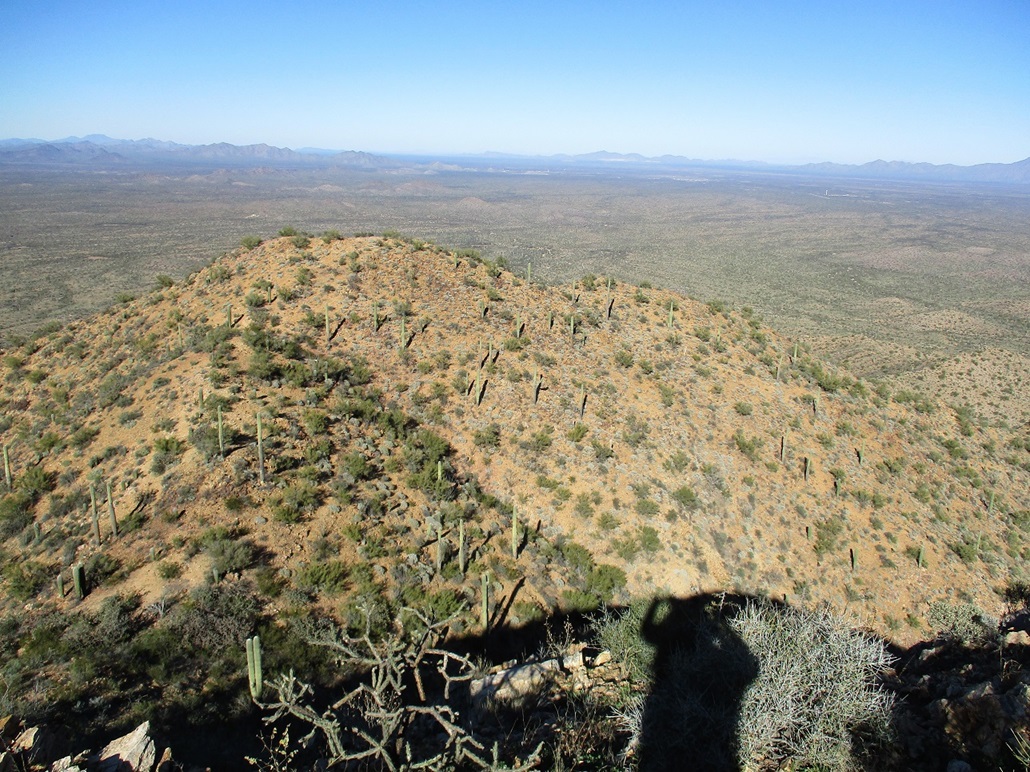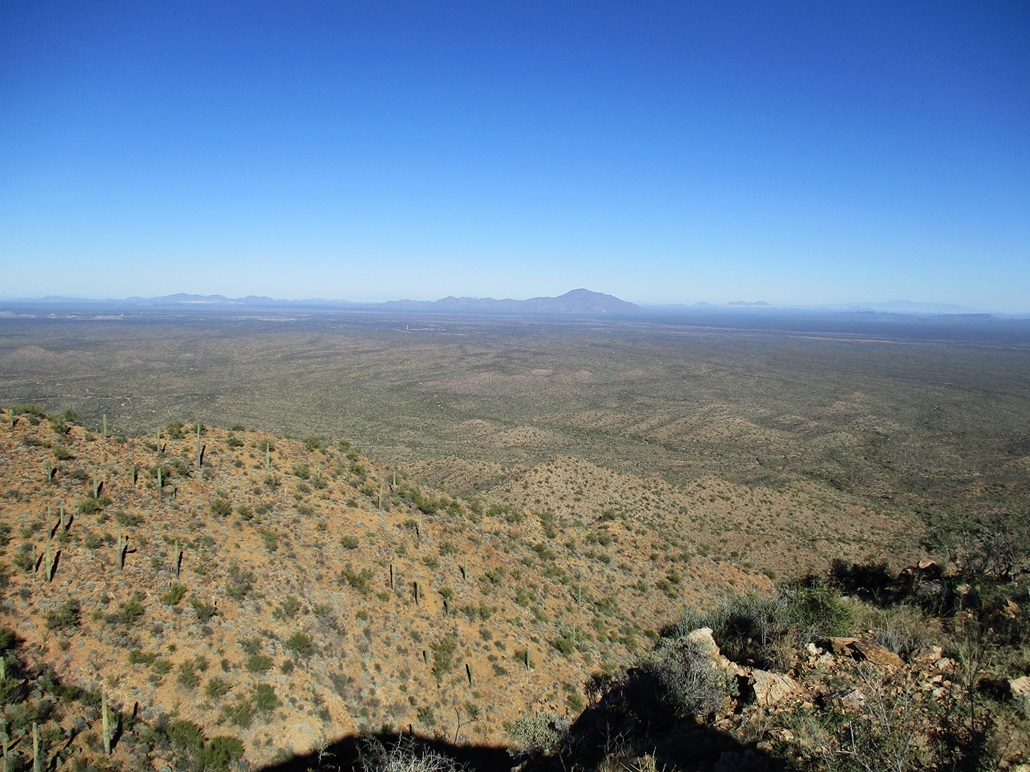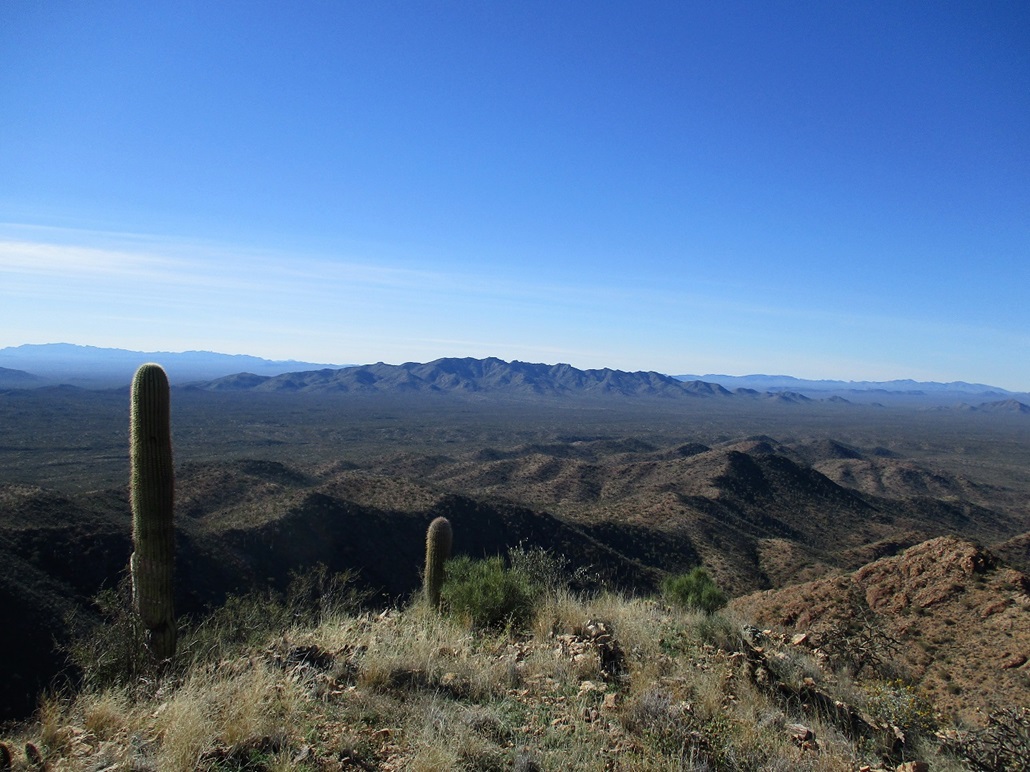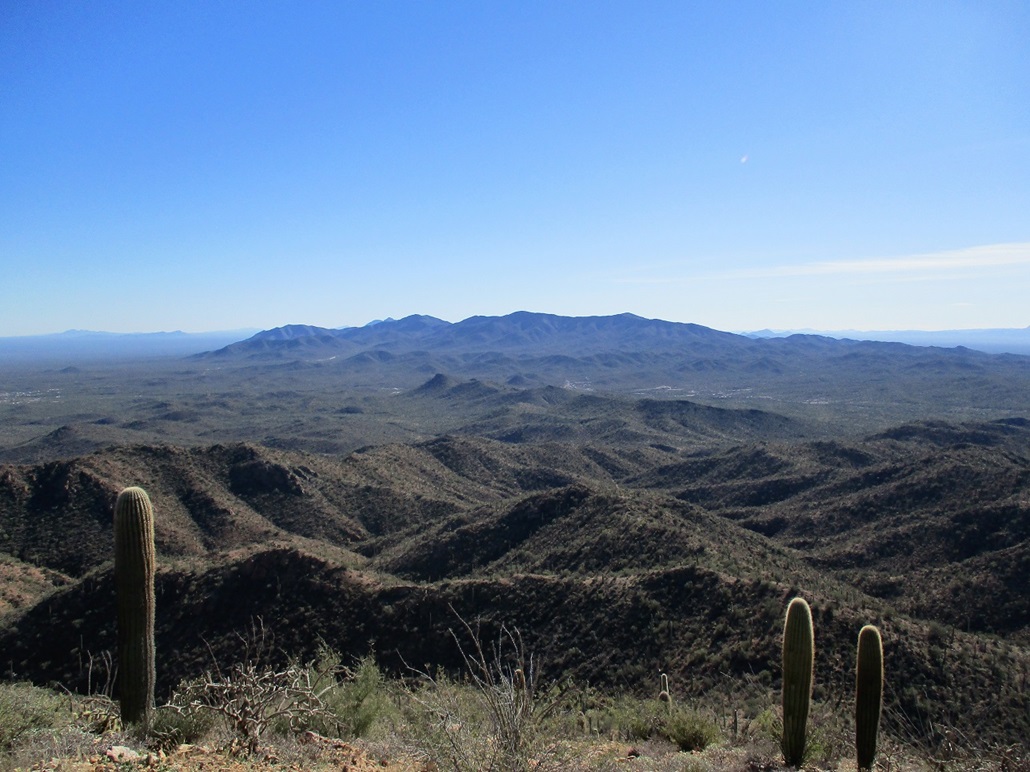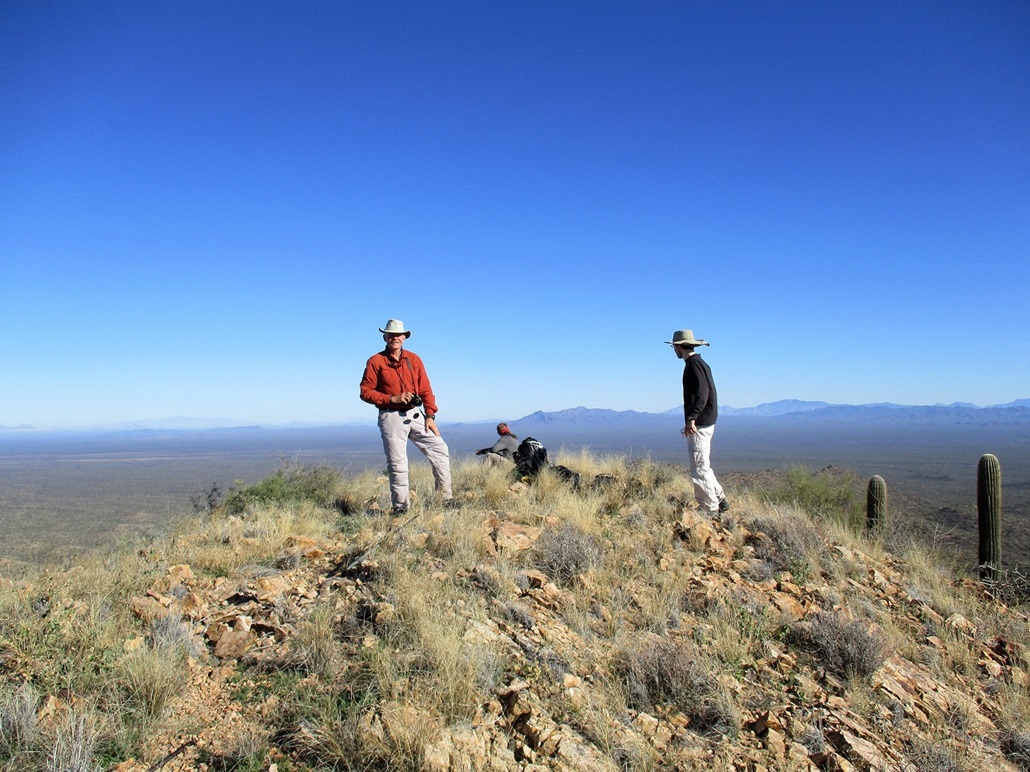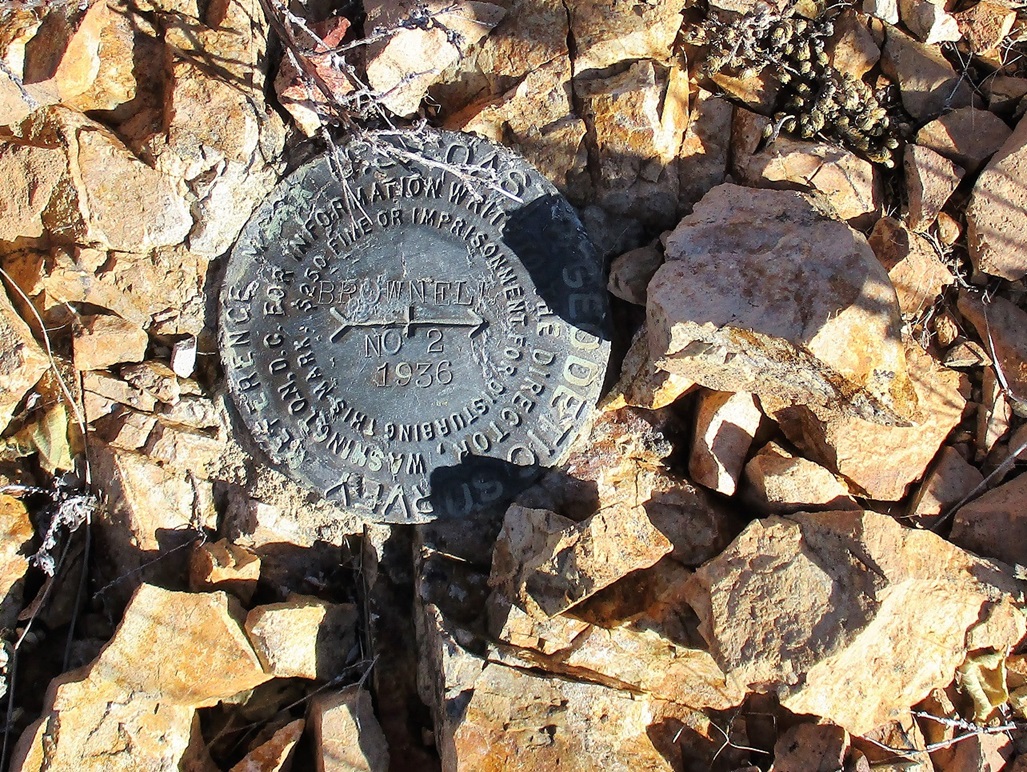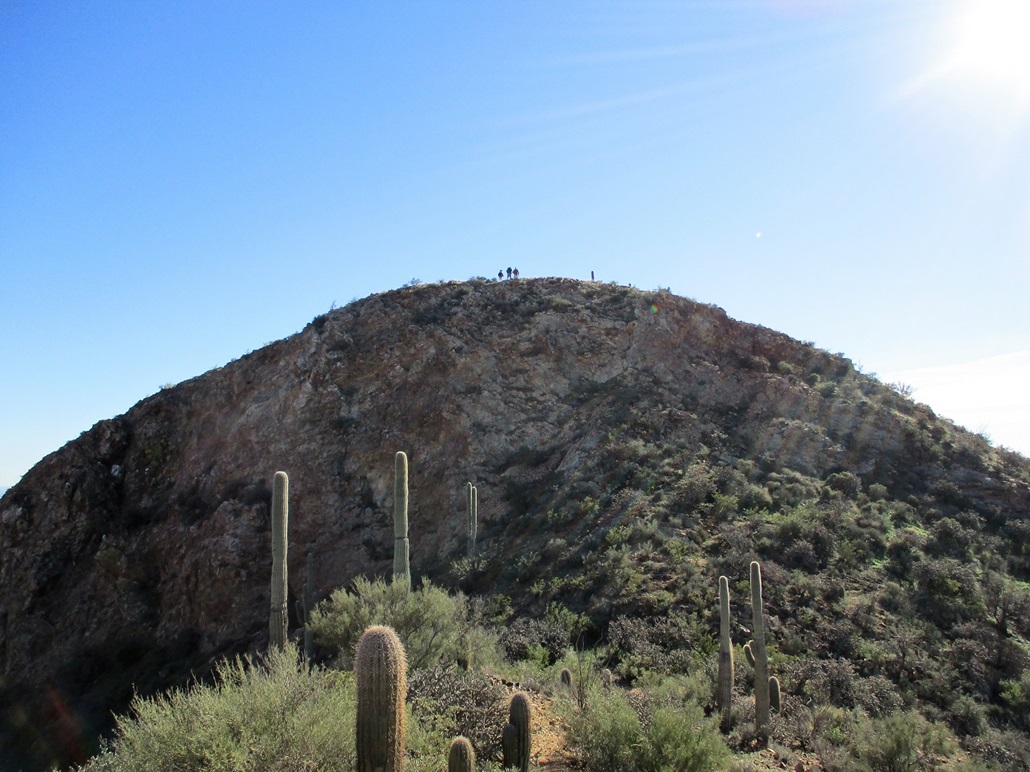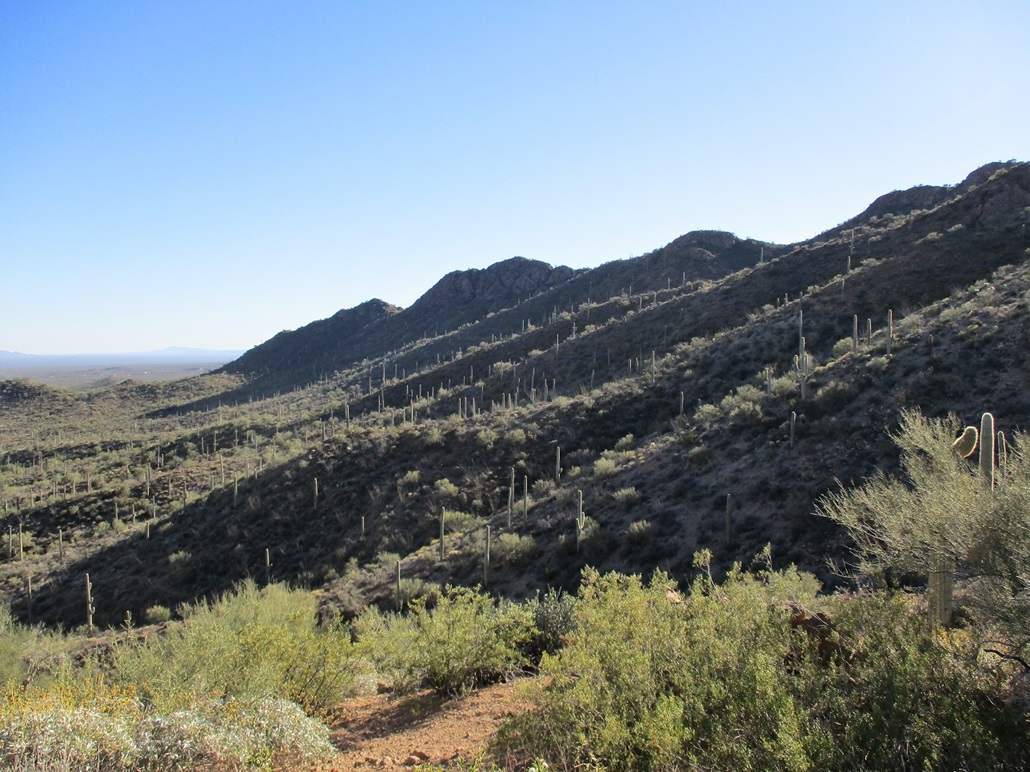
The Mountains of Arizona
• www.surgent.net
|
| Brownell Peak |
• Highpoint: Brownell Mountains • Tohono O'odham Indian Reservation • Pima County |
|
Date: January 26, 2019
• Elevation: 3,573 feet
• Prominence: 823 feet
• Distance: 3.5 miles
• Time: 3 hours
• Gain: 1,370 feet
• Conditions: Sunny and cool, no clouds
• Teammates: Matthias Stender, Paul McClellan, Mike
Brownell Peak rises north of the Tohono O'odham village of Quijotoa, northwest of the intersection of Indian Route-15 and highway AZ-86. The peak is named after a Mr. Brownell, a Civil War veteran who settled here, founded a mine and ran a general store. A small town developed, and a post office was established here from 1903 to 1911. The mine played out and the town soon disappeared. The topographical map shows a number of prospects on the mountain’s southern slopes, but the location of the actual town is uncertain. However, it was apparently big enough to warrant a mention on this old map from 1927 (source: Arizona Roads website). But nowadays, there's nothing to see to definitively pinpoint the old town's location.
Four of us convened to hike this peak, our second of the day after climbing nearby Sierra Blanca Mountains Highpoint. The Brownell Mountains are parallel to the Sierra Blanca range, which contains Rabia Benchmark. From Rabia, we drove back to Highway-86, then east to Route-15 and north to a dirt road on the west side of the highway. A GPS with waypoints was helpful as the road itself is easy to miss. Like on Rabia, I was the gate-opener-and-closer. We got in past the gate quickly, then proceeded westbound.
The road was rough, with a couple arroyo crossings early on. High clearance with 4-wheel drive was necessary, and brush grows thickly up to the side of the road. From pavement, we covered about three miles, eventually following a road that bent southward. This road ended at a turnaround up against the side of a hill, a large arroyo with 20-foot walls blocking our way. We were close to the summit already, being less than two miles to the southwest. We started hiking at about 1:30 p.m.. Weather was pleasant: cool in the shade, slightly warm in the sun, and an occasional breeze.
Truthfully, I was not beholden to hiking this peak and could have passed on it, but seeing how close we were, and that I probably would never come back here for this peak again, I decided to go for it. The route looked straightforward, following a long ridge that seemingly aimed right for the top, about a thousand feet higher.
We dropped into and out of the big arroyo, then aimed for the toe of this ridge, passing a few smaller arroyos along the way. We were soon on the slopes and simply started upward, going from point to point. We arrived to the first principal ridgebump, Point 3073, in about a half-hour, climbing up and over it, then losing about a hundred feet. As we gained more elevation, we could the summit rising behind our current ridge. We marched upward and soon came to the end of the ridge, atop a little bump that is essentially the north subsummit of Brownell Peak.
Here, we had a good view of the peak itself. It is a big rocky dome with cliffs and steep rocky slopes on its north side. It looked like it could be challenging. We dropped about fifty feet to a saddle, then started up the final slopes. We followed natural openings, angling to our right, and soon came to a small scree slope. We went up this slope and then to a T-junction. I was in no mood for scrambling and would have bailed here if no alternatives existed.
At the T, Paul went right and up a class-3 rock wall, while Matthias went left and up a ramp that narrowed into a ledge about two feet wide. Mike and I followed Matthias. We weren’t sure how far up we were, but above the ledge, that was it! The summit was just another dozen or so feet above us. That was almost too easy. We grouped up again on the top and took a break on its bare rocks and low grass. The one-way hike had taken about 90 minutes.
We did the usual summit things like reading the log book (it was in bad shape), having drinks and snacks, and trying to locate the benchmark. The best we could do was a witness marker. We also spent time looking around and eyeballing nearby peaks. Rabia rose to the west, and Quijotoa, Ben Nevis and South rose to the south. We could see Baboquivari, plus other peaks like Kitt, Coyote, Gu Achi, Sheridan and Cimarron. The day was sunny and slightly breezy, but with blue skies and no humidity.
I started down before the others, figuring they’d catch up to me. I followed the same route down, the only variation being that I sidehilled around Point 3073. The other three were right behind me ... then, they weren’t. As I hiked out the last portion, up and down through the little arroyos, I did not see or hear them. I was not concerned because they can easily be hidden within an arroyo. I was back to the cars a little after 4 p.m.. I dropped my pack and sat on a rock, and looked for them. They were nowhere to be seen.
I mulled around the cars for about ten minutes, a little concerned, hoping they were just on a different route and not hurt somewhere. I got up to whistle, when suddenly I heard Matthias, then the others. Their timing was good because I am a terrible whistler. They said they followed another arroyo and ended up a little more south, adding about five minutes to their hike. All was well.
The two hikes together encompassed about 8 miles and over 2,600 feet of elevation gain. We had designs on adding on Quijotoa Mountain, which has a road to its top. But the sun was low and we felt it unwise to be on that road in dusk or dark, with headlights drawing attention to us. We were all happy with the two peaks and decided to call it a day and head back home. The drive out took about 20 minutes. Back on IR-15, we bid Paul goodbye as he drove back to Tucson, while the rest of us headed back to Phoenix.
I am happy I hiked this peak after my initial feelings of sitting it out. The hike was not difficult, and that lovely ramp at the very top was a nice surprise. My thanks again to Mike for driving Matthias and me in with his beefy vehicle, which shaved off needless road-walking mileage and time. My thanks to everyone for being a good team.
|
|
